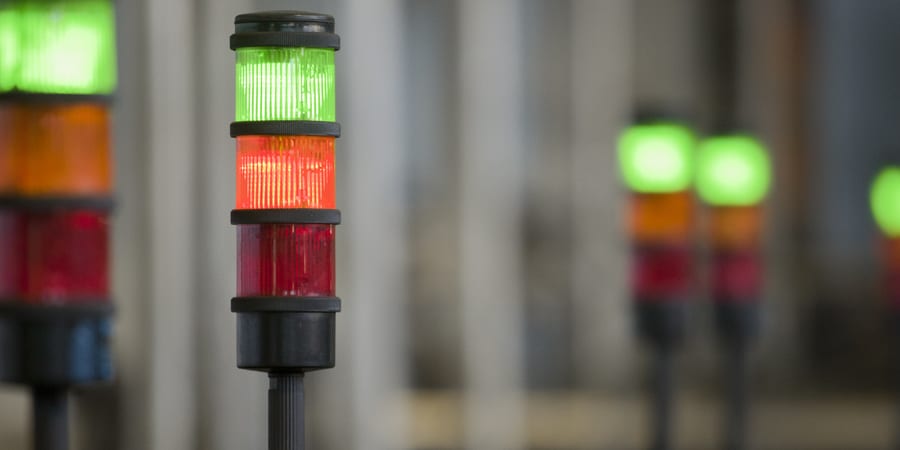
Lean without Jidoka is just Fordism
FEATURE – Nobody understands humans as well as humans do, and Jidoka is the key to learning about your customers and create ever-better products and services.
Words: Michael Ballé
Why do you do lean? Is it to try and make ever better products? Or is it to improve flow to increase throughput?
Scratch most lean programs and you’ll find Goldratt’s The Goal thinking lurking there: if we improve flow (by removing bottlenecks), we increase throughput and reduce resources in order to make more money (which, he states, is THE goal of any business).
Sakichi Toyoda was looking at human difficulties in producing cotton when he sought to reduce both defects (challenges in human use) and hardships (difficulties in doing the work). That’s when he mechanized the loom, inventing an automatic shuttle change, and famously came up with his key jidoka concept of thin metal strips that would test the tension of the cotton thread and stop the machine if the thread broke. He was solving human problems with automatic devices. His goal was to perfect ever better looms, just as later on Kiichiro Toyoda’s goal would be to perfect ever better automobiles.
What does that mean concretely?
Our society is built on creating lifestyle-changing mechanical appliances that can replace human labor in activities ranging from transportation (trains) to textile manufacturing (sewing machines, but also spinning equipment) and agriculture (the tractor). The point of such products is to make you autonomous – you no longer need to do the work yourself directly or ask someone else to do it for you. Think of those espresso machines now ubiquitous in offices around the world: whereas before you had to go to a coffee shop to get an expresso, with these machines and capsules you can make one yourself, without any help. The same goes for washing machines, dishwashers, word processors, etc.
Still, with every appliance, there are two human-led dimensions:
- Product: the mechanical tool that you can use autonomously to get what you want.
- Service: the person you want to talk to when you run into trouble with the machine.
Autonomy, with any appliance, requires a level of skills that is proportional to the difficulty of what you’re trying to do with the machine. Most products, after the initial and always unpleasant “getting-started” phase (most of us get by grumpily with reading the manual), can be used with minimal skill in simple cases, but require far greater knowledge in more complex use cases. At this point, the customer has the choice between learning the work herself – maybe not her preferred way of investing time – or getting someone to do it for her and show her how to.
OpEx-obsessed managers think that the aim of automation is to eliminate human resources costs. They dream of automated systems their customers can use without ever requiring speaking to anyone. They then don’t understand why customers disparage their offer, look for alternatives, and desert their brand as soon as they can. Customers are not looking for a product per se, they’re looking for a cool solution to their problems. They don’t want just any expresso – they want an easy one to make that tastes good and comes out of a good-looking machine that is easy to use with their friends, and they want easy access to fixes when something goes wrong.
The deep insight of jidoka is that mechanical appliances are just that – mechanical. Because they have no human judgment, they will:
- Produce defects – how can they know what level of quality a human expects (which is also contextual)?
- Break down – how can they monitor and replace their own parts?
- Never learn to make the next generation of machines better.
Any equipment produced has a service component attached to it, too. This requires someone to help the user with:
- Using the machine in the right way to get the right results according to the level of complexity of the use case.
- Fixing the machine when it breaks down.
- Improving the machine and coming up with a smarter, easier to use, better looking model.
Jidoka is about developing the human part of a product. We don’t need people to watch machines; we need them to look out for customer problems and be friendly and efficient in fixing them. Having automatic tills for a department store is a smart idea, if you understand that someone will still need to be there and be trained at service (first impression, availability, tone, problem-solving, etiquette, etc.) to create a smooth and seamless experience for the customers.
If trained at jidoka, this person will also be able to recognize all the issues with the automated system and work with engineers to improve the next generation. This is the entry point for value analysis (fixing things in machine already in production) and value engineering (improving things in the next generation product).
From Sakichi’s perspective, the goal of a company was not to make money, but to benefit society by helping people do stuff autonomously with ever-better products. Aiming to improve flow and throughput by reducing lead-times is a great way to reveal production scheduling and logistical issues, but it doesn’t do much in the way of making ever-better products. We need jidoka for this: the ability to detect defects or wear, the understanding of where the process deviates from normal work, stopping the line rather than letting the problem worsen, having management quickly respond to analyze and fix the problem, and incorporating the fix in the workflow and then in the next generation of machines.
Jidoka is more than a way to run production lines smoothly and reduce the cost of carrying defects in the flow. It is a fundamental way to teach people about products and equipment so they better grasp the relationship between automation and human contact and problem-solving. Jidoka is about understanding the proper place of humans (never use a human to do machine-like work) and machines (give self-judgement to machines) and the interaction between them (teach humans to trouble-shoot and engineer better machines).
In the age of Artificial Intelligence, as we automate intellectual tasks we previously thought were human specific, we’re going to badly need jidoka skills to redefine the proper place for human work and machine work. Still, even if you use ChatGPT to write all your code (or you essay), you will still encounter problems in terms of how your customers use the resulting system (or the teacher grades the paper), how AI generates nonsense or misses the context, and how to improve judgement in design of what you do.
In this age of division of labor, it’s easy to reduce lean to “this production thing” and to use lean techniques to improve flow to have more throughput and – maybe – save some resources in the process. However, the true aim of Lean Thinking is to make ever better products at an affordable price and lower production cost. Certainly, just-in-time is part of that, but it targets mostly the scheduling, organizing and moving around of things – not their design. Jidoka, both the elements of problem recognition and separating human work from machine work, is the key pillar to learn about the product/service interface and organically grow better and fuller offers of better product and better service for increased customer satisfaction.
Without jidoka, lean is an extended form of Fordism – occasionally useful, but not transformative. Ask yourself again: “Why do I do lean?” How are you going to help the company make ever-better products? The answer is as much in service as it is in production and design – machines will never understand the mixed feelings and complex tradeoffs humans naturally handle on a daily basis. Only humans can understand what humans truly seek, what problems human experience, and what kind of cool solutions humans look for.
THE AUTHOR

Read more


OPINION - If you have ever 5S-ed your daughter’s room or tried to bring one-piece flow to your grocery routine, this article on what lean management looks like in our personal lives is for you.


FEATURE – No organization can expect to survive without a sound marketing strategy. The author outlines the main elements and advantages of a lean marketing approach.


FEATURE – We are used to approaching strategic thinking as if our organization was in a position of stability and dominance. What if we started to look at it as creating better deals with all parties involved?


PROFILE – In this new section, Planet Lean features some of the most inspirational lean leaders out there. For the first profile, we have selected James Hereford, a former high school teacher who is now leading his third healthcare transformation.
Read more


FEATURE – Following a recent visit to Toyota, the authors strive to challenge popular beliefs and shed a light on the underlying philosophy that has made TPS a success for over half a century.


FEATURE – By adopting a product takt time perspective, we can better align engineering decisions with market demands, leading to better design, manufacturing, and material choices.


FEATURE – Developing new products faster than our competitors can make or break a company. The authors share three strategies to reuse our engineering knowledge and build a competitive advantage.


INTERVIEW – Catherine Chabiron sits down with Marc Onetto, a former executive with GE and Amazon, to discuss Jidoka and its profound effects on the way people work and think.

